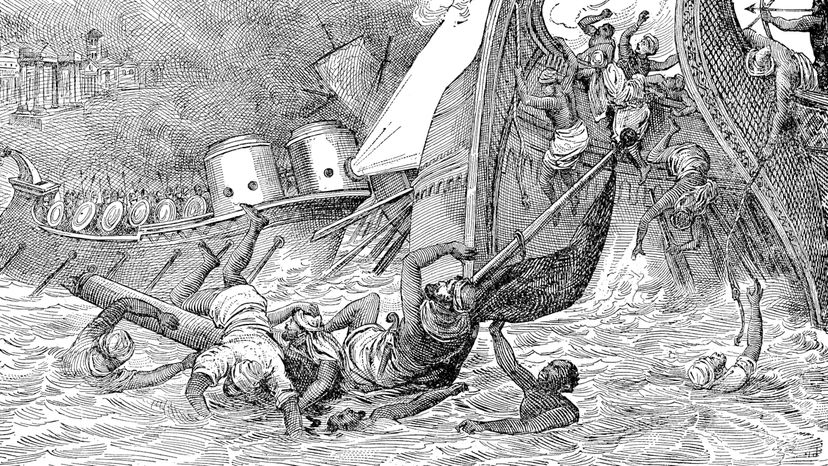The unique characteristics of Greek fire, also known as sea fire, rendered it a formidable force in ancient warfare. It could not be extinguished by water, which only served to intensify the flames, causing anything it touched to catch fire. This made it particularly effective in naval warfare, where enemy ships were vulnerable to its relentless, burning grip.
Moreover, just the sight and sound of Greek fire could invoke terror among enemy forces, including the enemy fleet. The psychological repercussions of Greek fire were as significant as the physical damage it inflicted. The weapon’s devastating effects on enemy forces forced them to adapt their tactics and develop new ways to counteract its power.
The ongoing battle for dominance in the face of Greek fire’s relentless power had a profound influence on the trajectory of ancient warfare, leaving a lasting legacy that continues to resonate in historical accounts as greek fire remained a formidable weapon.
Naval Warfare
Greek fire had a significant impact on naval battles, especially against Arab fleets, and revolutionized maritime warfare in the Byzantine Empire era. Initially used to protect Constantinople against Arab naval incursions, Greek fire was launched from tubes affixed to the prows of Greek ships, targeting enemy vessels. The tubular projectors added an air of mystery to the already enigmatic weapon.
In several pivotal naval battles, such as the Battle of Gallipoli in 1416, Greek fire proved itself as a formidable force on the high seas. The weapon was particularly effective during the First Arab Siege of Constantinople in 678 C.E. and the Second Arab Siege of Constantinople from 717-718 C.E., causing extensive damage to the Arab fleet and protecting the Byzantine Empire.
The profound impact Greek fire had on naval warfare is beyond measure. Its ability to devastate enemy fleets and thwart their advances changed the course of numerous conflicts, ensuring the survival of the Byzantine Empire and its capital city, Constantinople. The weapon’s potency and strategic advantage solidified its place in history as a game-changer in the realm of naval combat.
Siege Defense
Greek fire served not only as a powerful weapon in naval battles, but also as a practical means of safeguarding cities and fortresses from enemy assaults. It was utilized to incinerate siege towers and repel invaders, playing a major role in concluding the First Arab Siege of Constantinople in 678 C.E. The cheirosiphon, a hand siphon, was employed both offensively and defensively, with the intention of burning siege towers and protecting against adversaries.
The versatility of Greek fire in both naval and siege warfare made it an invaluable asset to the Byzantine Empire. Its ability to strike fear into the hearts of enemies and destroy their advances ultimately helped preserve the empire and the Western civilization it protected.
